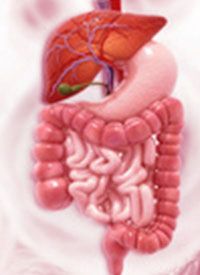Article
Second-line Fruquintinib Plus Paclitaxel Improves PFS in Chinese Patients With Gastric Cancer
Author(s):
The addition of fruquintinib to paclitaxel in the second-line treatment of Chinese patients with advanced gastric or gastroesophageal junction adenocarcinoma significantly improved progression-free survival over paclitaxel alone.

The addition of fruquintinib (HMPL-013) to paclitaxel in the second-line treatment of Chinese patients with advanced gastric or gastroesophageal junction (GEJ) adenocarcinoma significantly improved progression-free survival (PFS) over paclitaxel alone, meeting a primary end point of the phase 3 FRUTIGA trial (NCT03223376).1
The other primary end point of overall survival (OS) was not determined to be statistically significant per the prespecified statistical plan, but an improvement in median OS was reported with fruquintinib/paclitaxel vs paclitaxel monotherapy.
The fruquintinib combination also resulted in improved objective response rate (ORR), disease control rate (DCR), and duration of response (DOR) over single-agent paclitaxel. Moreover, the toxicity profile observed with fruquintinib in the trial was in line what has been observed in prior studies.
“By meeting the primary end point of PFS, fruquintinib demonstrated consistent efficacy and safety in gastric cancer indication in addition to its approved colorectal cancer indication,” Professor Rui-Hua Xu, MD, lead principal investigator and steering committee chairman, stated in a press release. “I am extremely excited that fruquintinib may provide a potential new oral treatment option for second-line gastric cancer patients based on the FRUTIGA trial.”
The randomized, double-blind, placebo-controlled, multicenter, phase 3 trial enrolled patients with histologically or cytologically confirmed gastric or GEJ adenocarcinoma with metastatic or locally advanced, unresectable disease.2
To be eligible for enrollment, patients must have experienced disease progression during or within 4 months following the last dose of their frontline treatment with platinum/fluoropyrimidine. Patients also needed to have at least 1 measurable lesion, an ECOG performance status of 0 to 1, and acceptable hepatic, renal, heart, and hematologic function.
If patients had evidence of central nervous system metastases, previously received a VEGF inhibitor, had evidence or a history of bleeding tendency within 2 months of randomization, experienced artery or venous thromboembolic events within 1 year prior to the first treatment, or acute myocardial infarction within 6 months before first treatment, they were excluded.
Study participants were randomly assigned 1:1 to receive fruquintinib once daily for a 3-weeks-on/1-week-off schedule plus paclitaxel at 80 mg/m2 on days 1, 8, and 15 of a 4-week cycle or placebo plus paclitaxel. Treatment continued until disease progression, death, intolerable toxicity, withdrawn consent, or end of treatment criteria were met.
Stratification factors included tumor type (stomach vs GEJ) and performance status (0 vs 1).
The co-primary end points of the trial included PFS and OS. Secondary end points comprised ORR, DCR, DOR, safety and tolerability, and quality of life.
Detailed results from the trial continue to be evaluated are expected to be presented at an upcoming medical meeting. These data, and findings from further analyses, will be shared with the China National Medical Products Administration.
“The combination of fruquintinib and paclitaxel demonstrated significant clinical benefits for these patients in controlling this disease,” Dr Weiguo Su, chief executive officer and chief scientific officer of HUTCHMED Limited, stated in a press release. “Our team will continue to analyze the data and discuss the findings with NMPA for possible new drug application filing.”
References
- HUTCHMED announces positive topline result in fruquintinib phase III FRUTIGA study in second-line gastric cancer in China. News release. HUTCHMed Limited. November 14, 2022. Accessed November 15, 2022. http://bit.ly/3g8LSpm
- A phase III study of fruquintinib in combination with paclitaxel in second line gastric cancer (FRUTIGA) (FRUTIGA). ClinicalTrials.gov. Updated September 2, 2022. Accessed November 15, 2022. https://clinicaltrials.gov/ct2/show/study/NCT03223376








